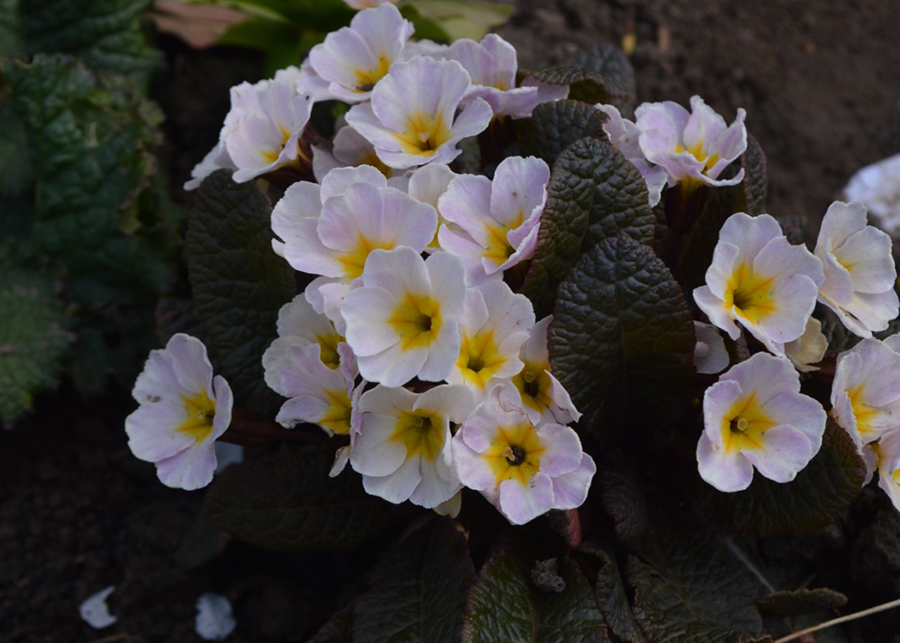Cape Primrose is a flowering plant that is commonly known as money plant, along with other common names such as dollar vase and banknote plant. This fascinating flower has a sweet smell and produces flowers of bright yellow and orange colors. The plant is one of the most beautiful flowering plants growing in south eastern Europe and parts of Asia.
Cape Primrose is one of the most beautiful flowering plants in the world. It is native to Madagascar, the Comoro Islands, and Afrotropical regions. This plant is part of the family Gesneriaceae. This beautiful plant is native to warm climates and is widely used as a potted plant.

Streptocarpus hybrida
The best way to care for Streptocarpus is to water it regularly. Avoid over-watering as this can lead to root rot, while too little water may result in wilting leaves. To prevent this from happening, ensure that the soil is completely dry before watering. Occasionally apply a potassium-rich food to the plant. This can be in the form of Epsom salts mixed with water or liquid fertilisers such as Multi- feed and Margaret Roberts Supercharger. You can also prune the leaves and flowers to maintain their shape and size.
John Innes
Cape primroses are a type of annual plant that is grown in Britain since the early 19th century. They have trumpet-shaped flowers with blue or purple tinges and are often called the ‘constant nymph’. These flowers were named after the novel ‘The Constant Nymph’ by Margaret Kennedy and were first introduced at the John Innes Institute decades ago. Today, there are hundreds of named hybrids and cultivars available. These plants have become popular among plant collectors in recent years. They are also a popular choice for indoor gardens.
Falling Stars
‘Falling Stars at Cape Primrose’ is an impressive hybrid. Its tall flower stalks bear trumpet-shaped flowers with various shades of blue. It was introduced decades ago and became a popular garden plant, especially indoors. Today, there are hundreds of named hybrids and cultivars. The bloom size varies widely.
Cyclamen mites
Cyclamen mites can be a serious problem for your plant. These tiny creatures can cause severe damage by piercing the plant with their mouthparts and sucking the plant’s cells dry. While they may infest any part of the plant, they tend to be most common around buds. You can spot them by looking for damaged leaves or distorted leaves, uneven folding, or thickened petioles.
Aphids
When growing Cape Primrose, keep in mind the conditions that will encourage your plant to resist aphids. The climate should be at least 50-70 degrees and the soil must be well-drained. Keep the plant out of direct sunlight and shade it when necessary. Also, remove old, brown leaves and flower stems, as these can contribute to root rot.

Soil-mould
Cape Primrose is susceptible to botrytis (grey mold), a fungal disease caused by excess moisture. This fungus attacks the plant’s leaves, flowers, and stalks. The symptoms of botrytis include brown or water-soaked spots, which eventually turn into tan or gray fuzzy mold, or even dead tissue. Botrytis can be treated by applying a fungicide every five to seven days during rainy weather.
Temperature extremes
The Cape Primrose is a hardy, showy relative of the African violet that blooms for months at a time. This plant is native to South Africa where it grows on forest floors. Its long leaves are green with a floral spray above them. It can tolerate varying temperatures and thrive in low light.
Proper light
Unlike African violets, Cape Primroses don’t require direct sunlight. Instead, they thrive in bright indirect light. They tolerate 60 -75 degrees Fahrenheit, but too much sun will burn the leaves and fade the flowers. To get the best blooming potential, place them near a south-facing window. Ensure that the soil is moist and drains well.
How to Care For Cape Primrose Result
Cape Primrose is one of the most beautiful flowering plants in the world. It is native to Madagascar, the Comoro Islands, and Afrotropical regions. This plant is part of the family Gesneriaceae. It’s one of a few attractive flowers available for use as a pot plant. The Cape Primrose is a slow-growing evergreen vine that draws its name from three longitudinal stripes on the stem-skin. These stripes are pink purple colors that blend with white flowers blossom. However, there is a distinction between this plant from other closely related gesneriad varieties primarily based on its star shape markings.









